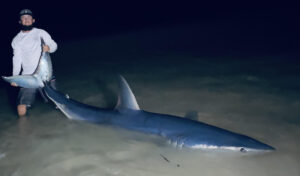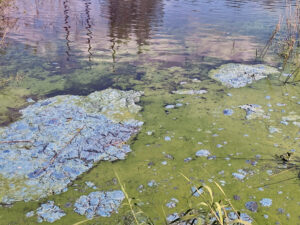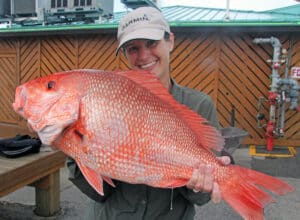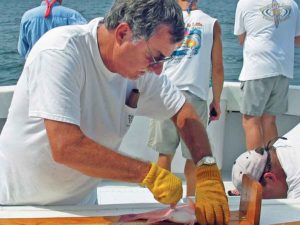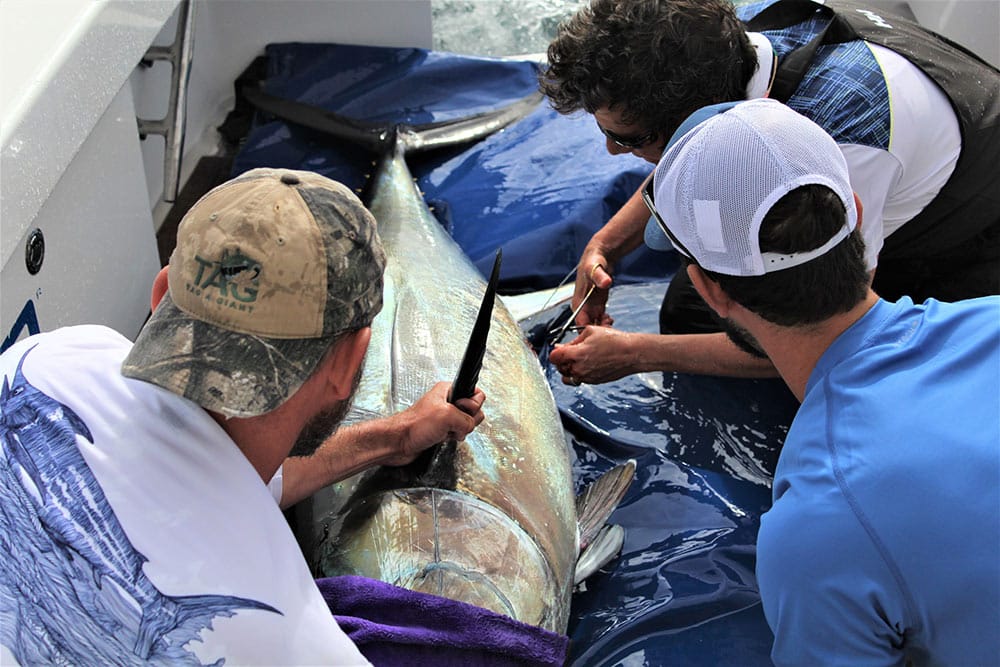
For three days in mid-September, the Coastal Conservation Association of California (CCA CAL) worked with noted bluefin tuna expert Dr. Barbara Block of Stanford University to tag seven Pacific bluefins with electronic and/or conventional tags off San Clemente Island. By using electronic tags to track the tunas’ journeys, the team can provide sophisticated spatial data to better understand their movements and determine the age at which bluefin migrate to the western Pacific to spawn in the waters off Japan and Taiwan.
“The key question is when and where do these large fish go back and spawn,” Block says. She believes that Pacific bluefin must reach an age of 7 to 8 years (about 250 to 300 pounds) before they travel across the ocean to spawn. On the other hand, current fishery models for Pacific bluefin, developed by the International Scientific Committee for Tuna and Tuna-Like Species, estimate the age of first reproduction at 3 to 5 years. Understanding the actual spawning age is critical to the survival of the species and important in estimating their spawning or adult biomass.
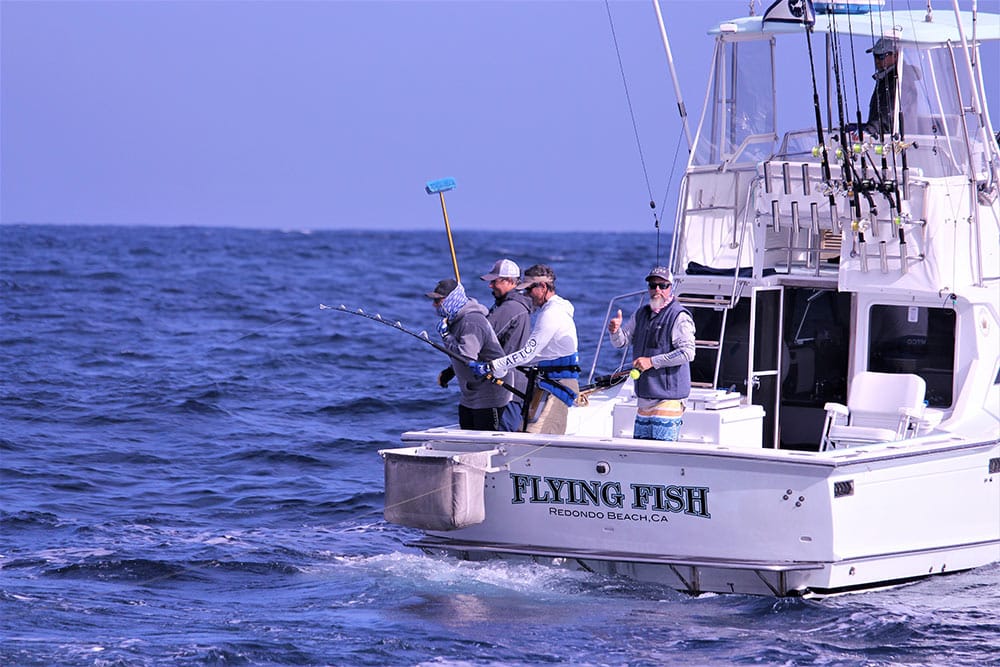
One of the seven fish tagged measured 72 1/2 inches in curved length and was estimated to weigh 250 pounds. That large tuna was caught on the boat Flying Fish by CCA CAL Chairman Bill Shedd, president of the AFTCO fishing-gear company, and was transferred to the vessel Quiteña, owned by Paul Fruchbom.
Dr. Block and her surgical team then affixed both an internal archival tag and a pop-up satellite tag to the fish. “By putting two tags on the animal, we were able to first track it for a year with the pop-up satellite tag. With the archival tag, we can get up to five years on the life of this fish,” she says. Teams aboard four other vessels — Joker, Fight On, Fantail 2, and It Never Ends — also placed new, experimental, external archival electronic tags on six additional Pacific bluefins.
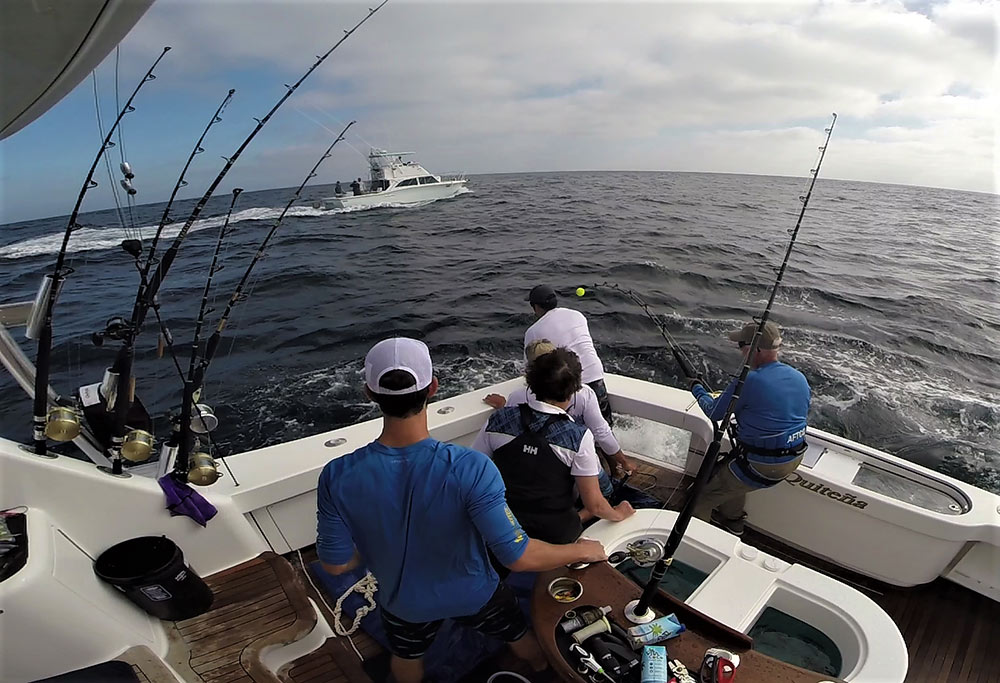
Bluefin tuna are an international resource shared by countries on both sides of the Pacific. Currently their overall spawning biomass is considered low compared with estimates of original biomass. Bluefin tuna only spawn in the western Pacific Ocean in the waters off Japan and Taiwan. The juveniles spend their first year feeding nearby, and then an unknown fraction of the 1- and 2-year-old fish — most weighing less than 20 pounds — journey to the eastern Pacific Ocean and the California Current. They swim from Mexico’s Magdalena Bay to southern Oregon in an annual north-south migration.
Though anglers have recently reported excellent bluefin tuna fishing off California due to favorable water conditions and an abundance of anchovies, the total population of Pacific bluefin remains in very poor shape, experts say. Many small fish are caught by Japan, Korea, and other foreign countries on the western side of the Pacific, and large breeding fish are caught by Taiwan and Japan on the spawning grounds. Once bluefin arrive in the eastern Pacific, they experience commercial pressure while in Mexican waters. The CCA CAL team expects to plan additional tagging trips with Block and her associates in the future. Having accurate spawning-age information plays a critical role in solving the management challenges of bluefin tuna across the Pacific basin.

